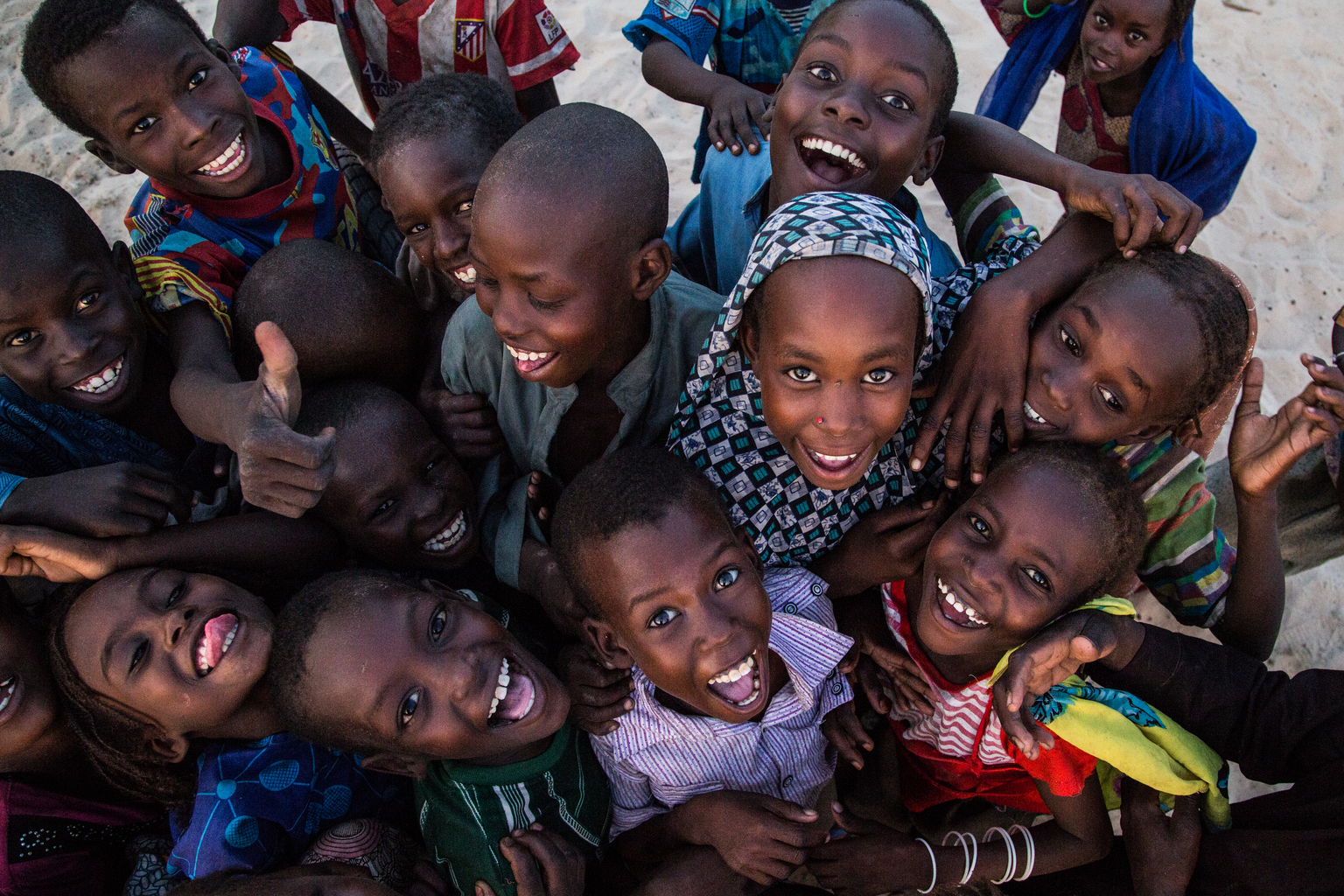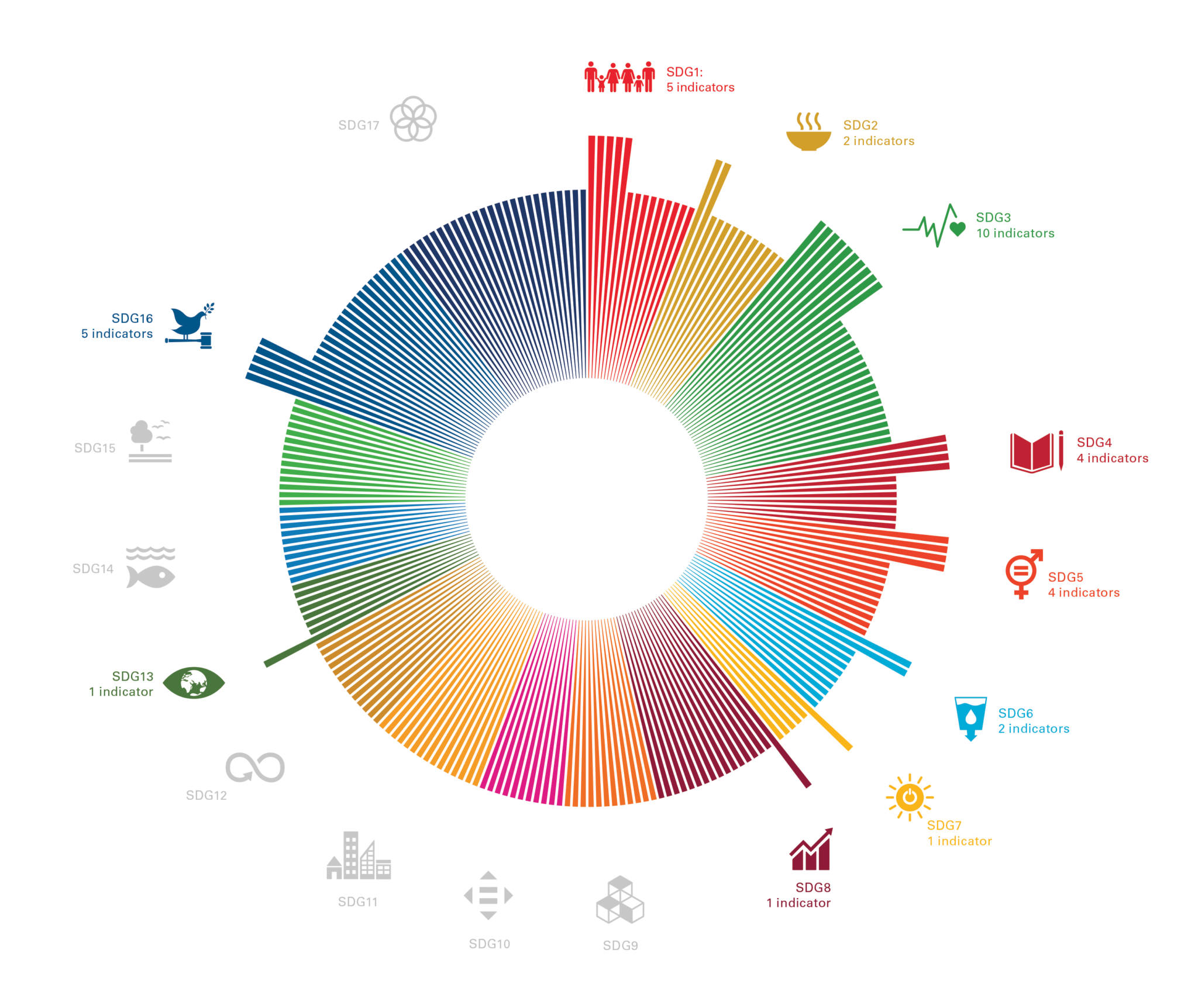
This is a series of briefing notes for UNICEF regional and country offices on SDG indicators. The first note summarises the development and implementation of the SDG global indicator framework and UNICEF’s role in supporting member states to collect, analyse and report on child-related SDG indicators at national and global levels. Briefing notes 2-15 provide detailed information on child-related global SDG indicators for which UNICEF has been identified as custodian, co-custodian, or supporting agency for the purposes of global reporting. Additional briefing notes may be developed in the future covering other global indicators related to children and cross-cutting issues related to SDG monitoring.
1. NATIONAL AND GLOBAL MONITORING OF CHILD-RELATED SDG INDICATORS
2. CHILD POVERTY
3. NUTRITIONAL STATUS
4. MATERNAL MORTALITY & SKILLED ATTENDANT AT BIRTH
5. CHILD MORTALITY
6. UNIVERSAL HEALTH COVERAGE
7. LEARNING
8. EARLY CHILDHOOD DEVELOPMENT
9. VIOLENCE AGAINST GIRLS AND WOMEN
10. HARMFUL PRACTICES
11. DRINKING WATER
12. SANITATION & HYGIENE
13. CHILD LABOUR
14. ABUSE, EXPLOITATION & VIOLENCE
15. BIRTH REGISTRATION
The 2030 Agenda
The 2030 Agenda establishes 17 Sustainable Development Goals (SDGs) and 169 global targets, relating to both development outcomes and means of implementation, designed to be integrated and indivisible and to balance the social, economic and environmental dimensions of sustainable development. This ambitious new universal agenda is intended to be implemented by all countries and all stakeholders, acting in collaborative partnership.
The Global SDG Indicator Framework
The 2030 Agenda mandated the UN Statistical Commission (UNSC) to define global indicators for tracking the SDG goals and targets. The Statistical Commission has established an Inter-Agency & Expert Group on SDG Indicators (IAEG-SDG) ‘to develop and implement the global indicator framework for the goals and targets of the 2030 Agenda’.
Global Data Custodians
The Inter-Agency & Expert Group (IAEG) on SDG Indicators has identified ‘custodian agencies’ for each of the 232 global SDG indicators which are expected to:
- Lead the development of methods and standards for data collection,
- Contribute to statistical capacity building and data collection,
- Establish mechanisms for compilation and verification of national data,
- Maintain global databases and provide internationally comparable estimates to UN Statistical Division for inclusion in the SDG global database.
UNICEF is well established in the role of global custodian of data for children. The IAEG has identified UNICEF as custodian or cocustodian for 19 global SDG indicators and it has also been listed as a supporting agency for a number of other indicators in the global framework.
Number of child-focused indicators within each SDG goal

UNICEF Support to Monitoring Progress for Children in the 2030 Agenda
UNICEF’s activities in more than 190 countries entails including support to governments and development partners in every region to collect, analyse and use data to inform policies and programmes designed to save lives and help children realize their full potential. UNICEF has established extensive global databases and is committed to supporting Member States to monitor progress for children in the 2030 Agenda by developing and testing new indicators and methods and supporting their collection and analysis to inform national and global monitoring of progress for every child.
UNICEF has played a leading role in the development of new standards and data collection methods for monitoring child wellbeing. Many of the measurement techniques developed by UNICEF and its partners during the MDG period have now been integrated within the SDG global indicator framework.
UNICEF also supports the collection and analysis of a wide range of data relating to children beyond SDG indicators, including through government surveys and censuses, administrative and regulatory data, and participatory reporting by service users and citizens including parents, adolescents and children. Over the past 20 years, the Multiple Indicator Cluster Survey programme has systematically built the capacity of national statistical authorities around the world to collect child-related data. UNICEF also actively supports the development of censuses and administrative data sources, including civil registration and vital statistics systems and sectoral management information systems.
Monitoring Progress for Children
Related to the 232 global SDG indicators, UNICEF has identified 44 that most directly concern children and will be the major focus of UNICEF’s efforts to monitor and report on ‘progress for every child’ during the SDG era. These include the 17 global SDG indicators for which UNICEF has been identified as the official custodian or co-custodian for the purposes of global reporting which are discussed in more detail in the briefing notes.
The relation of child-related indicators to official SDG indicators is complicated. There are SDG indicators which have a broad scope, but UNICEF wants to measure the child-related elements (e.g. UNICEF monitors child poverty, but the SDG indicator is for poverty disaggregated by (among other things) age. Other indicators are composite, which UNICEF breaks into separate indicators (such as HIV infections for children under five, and for teens – the formal SDG indicator lumps these together). So the 44 child-related SDG indicators are – formally – 35 indicators, separated and disaggregated to highlight the children’s issues.
General information and resources:
Progress for Every Child in the SDG Era report
Sustainable Development Goal Indicators official website
